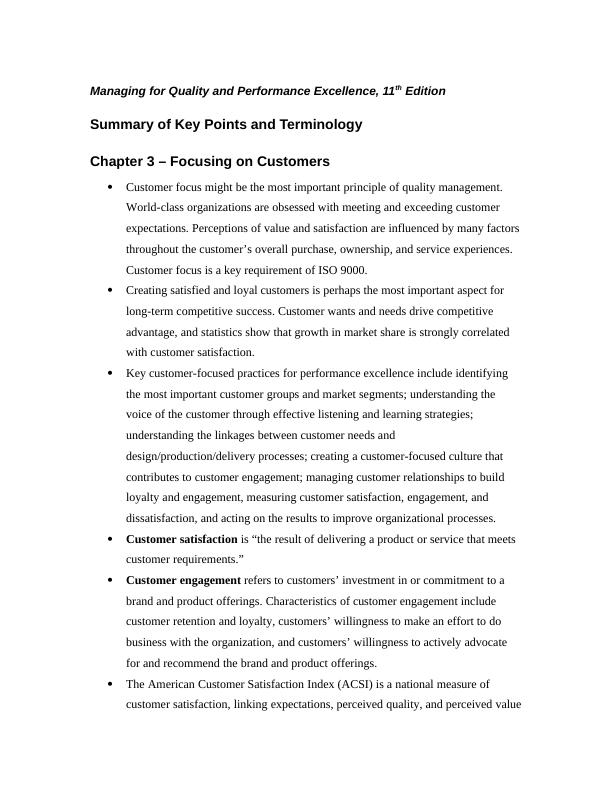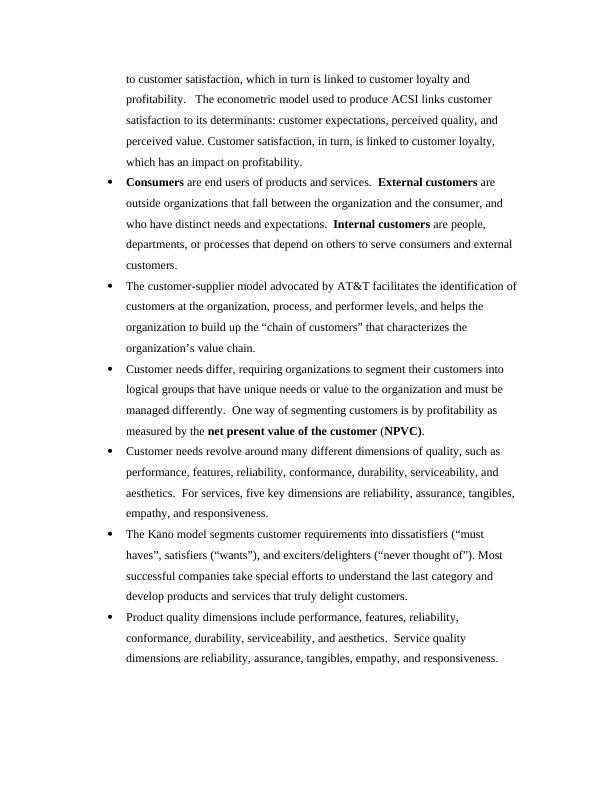Managing for Quality and Performance Excellence: Chapter 3 Summary
6 Pages1715 Words498 Views
Added on 2021-10-27
About This Document
This article summarizes Chapter 3 of Managing for Quality and Performance Excellence, which focuses on customer satisfaction, engagement, and loyalty. It covers key practices for performance excellence, such as identifying important customer groups, understanding the voice of the customer, and managing customer relationships. The article also discusses how to measure customer satisfaction and loyalty using metrics like the American Customer Satisfaction Index and the net promoter score.
Managing for Quality and Performance Excellence: Chapter 3 Summary
Added on 2021-10-27
ShareRelated Documents
End of preview
Want to access all the pages? Upload your documents or become a member.
(PDF) The Business Research Methods
|9
|1758
|44
Consumer satisfaction score Article 2022
|5
|707
|26
Quality Management in Business
|21
|1647
|41
Report about What is the Meaning of Management?
|7
|1541
|171
Social Media and Marketing for Starbucks Australia
|4
|692
|469
Customer Value Anticipation and Behavior | Banking Sector
|6
|1312
|44



